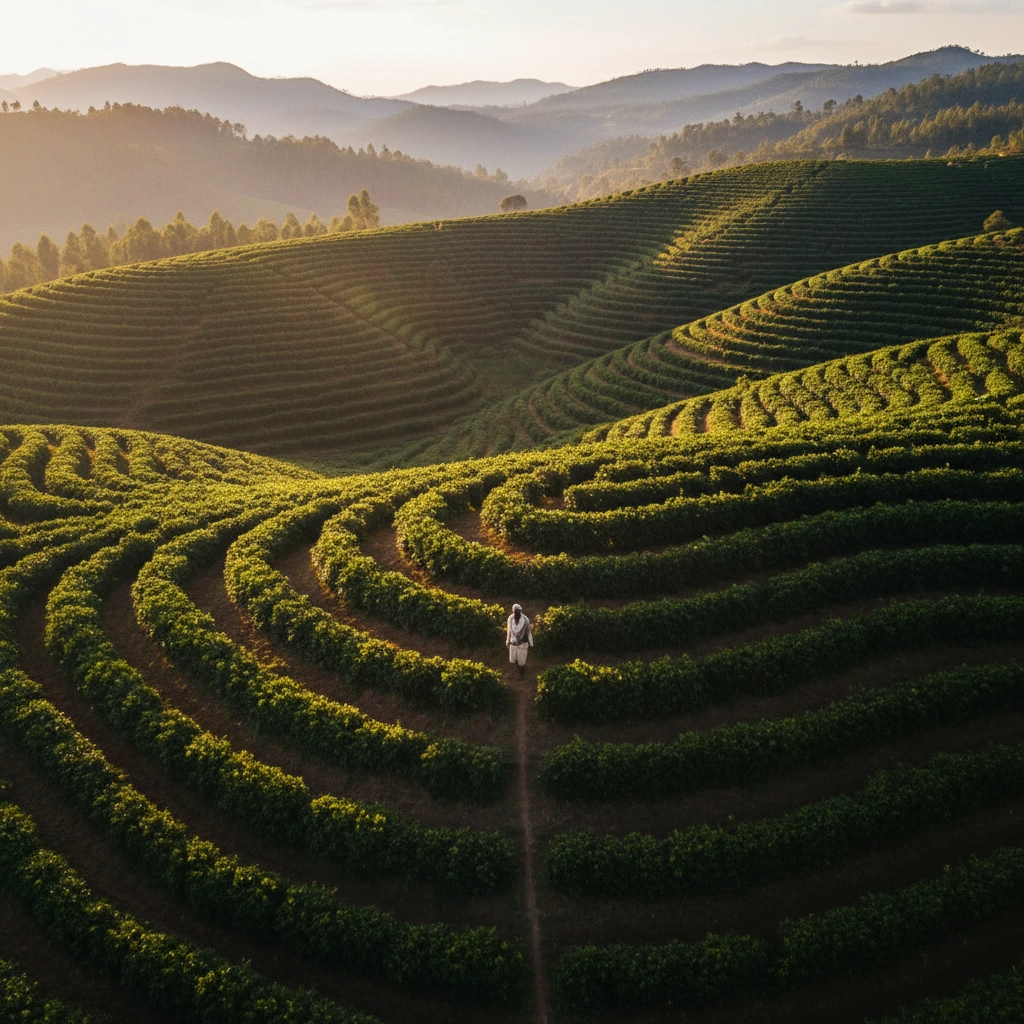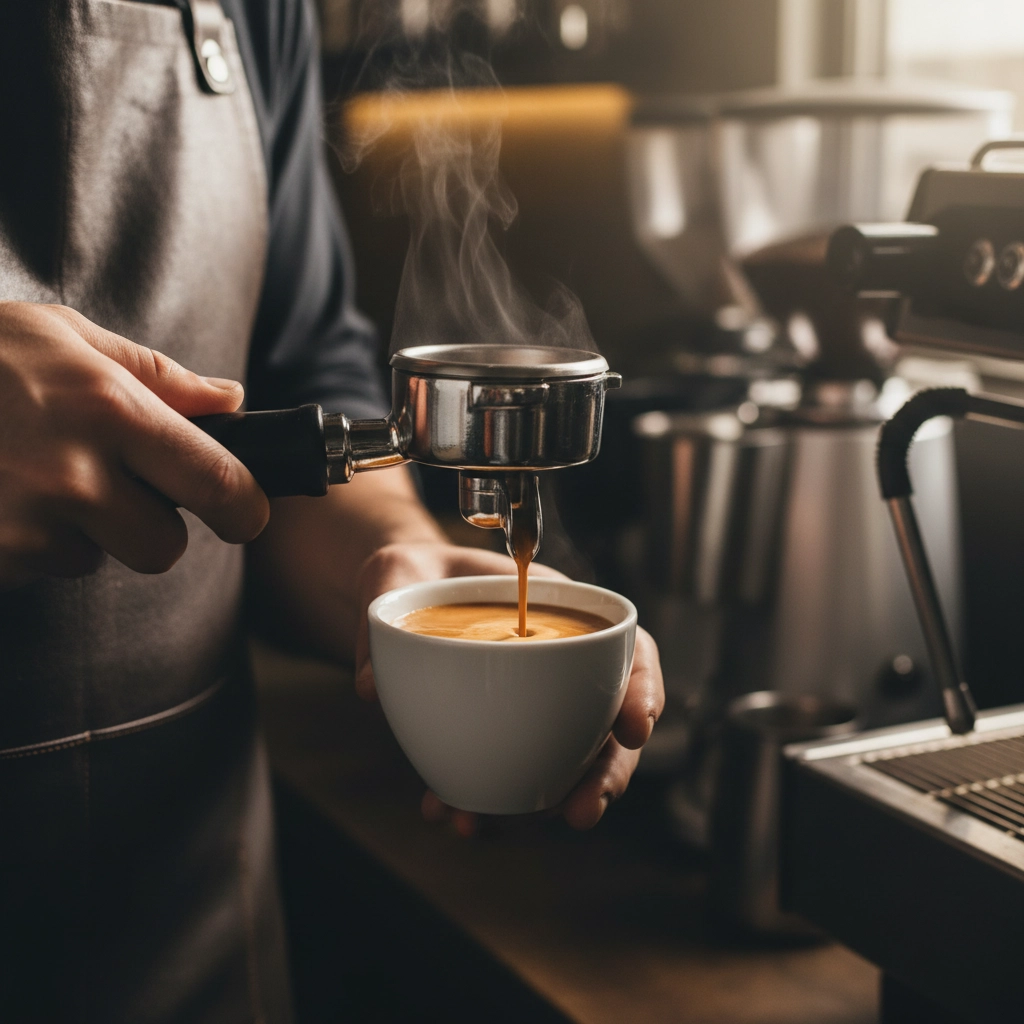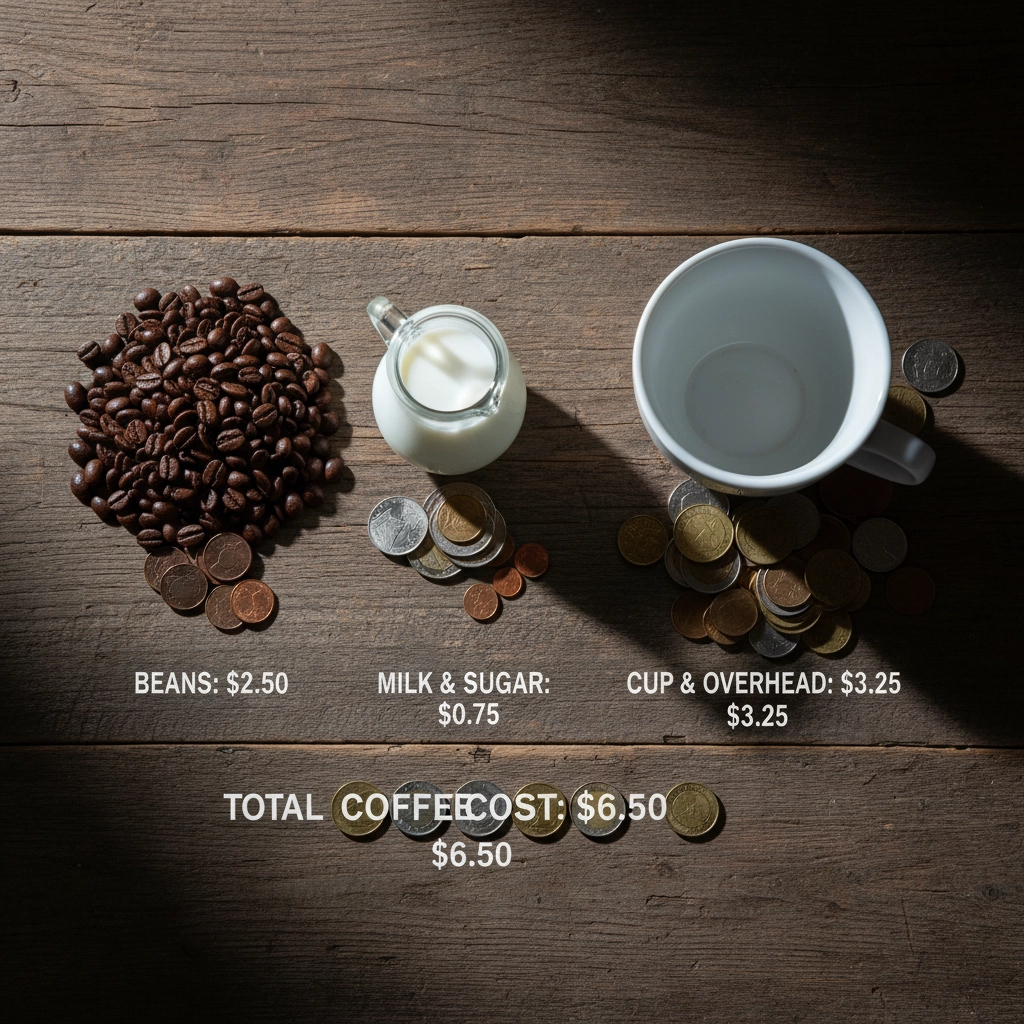Ever wonder why your morning latte costs more than a fast-food meal? Or why coffee prices seem to creep up every few months? You're not alone. The economics behind your daily cup of joe is more complex than you might think, involving everything from Ethiopian farmers to your local barista's weekend pay rate.
Let's break down the real cost of coffee and why understanding these economics can help you make smarter choices about your caffeine habit.
The Journey Begins: Farm-Level Economics
Coffee's economic story starts thousands of miles away on farms scattered across the world's coffee belt. The production costs at this level vary dramatically depending on farm size and location. Small Ethiopian farms, for example, can produce coffee for as little as $0.15 per kilogram, while larger operations face significantly higher costs due to labor, equipment, and infrastructure needs.

Here's what's fascinating: small farms with less than 5 hectares operate on completely different economics than their larger counterparts. While a small Ethiopian farm might spend just $44 per hectare in production costs, medium-sized farms (5-10 hectares) face costs around $67,010 per comparable area. The largest farms? They're looking at roughly $68,070 per unit area.
This scaling effect explains why coffee pricing can be so volatile. When small farms, which make up a huge portion of global coffee production, face challenges like climate issues or labor shortages, the entire supply chain feels it.
What Really Goes Into That $6 Latte
Now let's talk about what happens when those beans reach your local coffee shop. The cost breakdown might surprise you.
For a standard flat white, the actual coffee beans cost about 38 cents per cup. That's based on using 12 grams of quality beans at wholesale prices. Add 200ml of milk (about 40 cents), plus the cup and lid (20 cents), and you're looking at roughly 98 cents in raw materials.
But here's where it gets interesting: and expensive.
The Labor Factor
Labor is by far the biggest cost component in your coffee. A skilled barista earning $27.17 per hour doesn't actually cost the business just $27.17. When you factor in superannuation (11%), holiday pay (7%), sick pay (3%), and workers' compensation (3%), that hourly rate jumps to $33.75.
If a barista makes 200 coffees during an 8-hour shift, that's $1.35 in labor costs per cup. And on weekends? Those costs can hit $2.00 or more per cup due to penalty rates.

This is why your weekend coffee often costs more than your weekday cup: it's not just about demand, it's about the real cost of weekend labor.
Why Coffee Prices Keep Rising
Coffee has gotten about 14% more expensive year-over-year recently, and it's not just inflation (though that's part of it). Several factors are driving costs up:
Supply Chain Chaos The pandemic didn't just disrupt our daily routines: it wreaked havoc on coffee supply chains. Harvesting seasons were disrupted by labor shortages, shipping containers became scarce and expensive, and import/export restrictions caused massive delays. These costs don't just disappear; they get passed down to you.
Climate Challenges Coffee is incredibly sensitive to climate conditions. As weather patterns become more unpredictable, coffee yields become less reliable. When supply becomes uncertain, prices tend to rise as buyers compete for available inventory.
New Tariffs Recent tariffs on imported coffee add another layer of cost that ultimately shows up in your cup. These policy decisions might seem abstract, but they have very real impacts on what you pay at the counter.
The Home Brewing Economics
Here's where things get interesting for your wallet. Let's do some math.
If you buy a $5 latte every weekday, that's $1,300 per year. Compare that to brewing at home: a pound of quality coffee like our French Roast can make approximately 30-35 cups, depending on how strong you like it.

Even with premium beans, milk, and factoring in the electricity for your coffee maker, you're looking at roughly $0.75-$1.00 per cup for a quality home-brewed coffee. That's potentially $800+ in annual savings while still enjoying excellent coffee.
The key is choosing the right beans. Quality matters significantly in home brewing because you can't rely on a skilled barista to mask the flavor of mediocre coffee. Investing in a good roast: whether it's a bold French roast or a smooth breakfast blend: makes the difference between a satisfying morning ritual and a disappointing cup.
The True Cost of Convenience
When you buy coffee out, you're not just paying for beans and milk. You're paying for:
- Prime real estate (coffee shops need expensive locations)
- Skilled labor (good baristas are worth their weight in gold)
- Equipment maintenance (commercial espresso machines cost more than most cars)
- Atmosphere and experience
- Convenience and speed
Understanding this helps frame the value proposition. Sometimes that $6 latte is worth every penny: when you need the convenience, want the social experience, or simply don't have time to brew at home.
Smart Coffee Economics: What You Can Do
Armed with this knowledge, here are some strategies to optimize your coffee spending:
Know When to Splurge Save the expensive coffee shop visits for when you truly value the experience or convenience. Make home brewing your default for routine caffeine needs.
Invest in Quality Beans Don't cheap out on coffee beans if you're brewing at home. The difference in cost between mediocre and excellent coffee is minimal compared to the difference in satisfaction.
Consider the Total Cost Factor in time, equipment, and your enjoyment when calculating the "real" cost of different coffee options.

Understand Seasonal Pricing Coffee prices often fluctuate based on harvest seasons and global supply. Understanding these patterns can help you time larger purchases or adjust your consumption habits.
The Bottom Line
Coffee economics is a fascinating blend of agricultural science, global trade, labor economics, and consumer psychology. The next time you're debating whether to grab that latte or brew at home, remember that you're making a decision within a complex global economic system.
Your $5 morning coffee supports Ethiopian farmers, shipping companies, local businesses, and skilled baristas. But understanding these economics also empowers you to make smarter choices about when to splurge and when to save.
Whether you choose the convenience of your local coffee shop or the economics of home brewing, you're now equipped to understand exactly what you're paying for: and why that morning cup costs what it does.
The coffee industry will continue evolving, prices will keep fluctuating, and new challenges will emerge. But one thing remains constant: quality coffee, whether from a skilled barista or your own kitchen, is an investment in starting your day right. And now you know exactly what that investment is buying.




